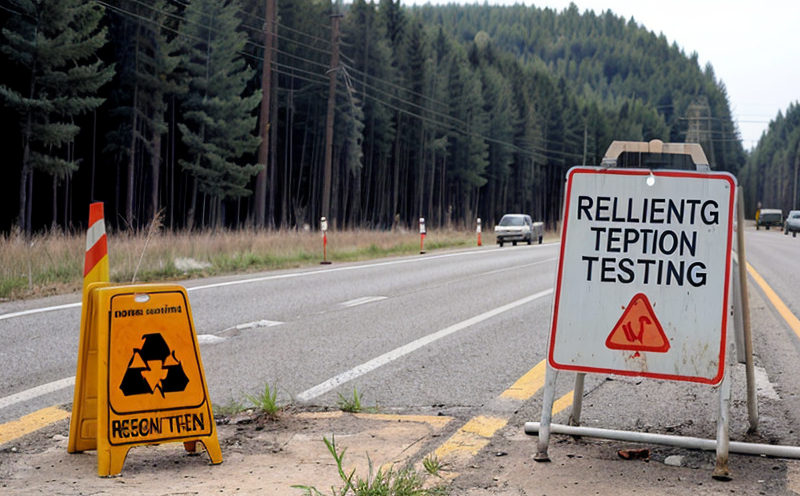ASTM D7298 Radiological Characterization of Environmental Ashes
The ASTM D7298 standard provides a comprehensive approach for the radiological characterization of environmental ashes, which are often generated from waste incineration processes. This method is critical for ensuring that the ash does not pose any radiological risks to human health and the environment. The process involves detailed sampling, sample preparation, and analysis using various types of radiation detection equipment such as gamma spectrometers.
The first step in this characterization process is proper sampling. It's important to collect a representative sample from the ash pile or container to ensure that the results are indicative of the entire material. After collection, the samples undergo rigorous preparation steps which include drying, grinding, and sieving to obtain a homogenous particle size suitable for analysis.
The primary goal of ASTM D7298 is to quantify radionuclides present in the ash. This involves measuring the levels of various isotopes including but not limited to 137Cs, 60Ni, and others that are commonly found in waste incineration ashes. The chosen instruments must have high sensitivity and selectivity to detect even trace amounts of these radionuclides.
The methodology also includes quality control measures such as the use of reference materials for calibration purposes. These standards help ensure accuracy and reproducibility across different laboratories performing similar analyses.
Once the samples are ready, they undergo gamma spectrometric analysis to identify and quantify the radionuclides present in them. This technique allows for precise measurement by detecting the characteristic energy emissions from radioactive sources within the sample.
Another important aspect of this standard is its emphasis on safety precautions during sampling and analytical procedures. Handling radioactive materials requires strict adherence to protocols outlined by regulatory bodies like NCRP (National Council on Radiation Protection & Measurements) or IAEA (International Atomic Energy Agency).
The results from ASTM D7298 can be used in several ways depending on the intended use of the ash. For instance, if it's planned for landfill disposal, these data will help assess whether additional treatment is necessary before safe storage. Alternatively, when considering recycling applications, knowing which radionuclides are present helps determine potential impacts on downstream processes.
In summary, ASTM D7298 plays a crucial role in ensuring that environmental ashes produced from waste incineration do not pose any radiological hazards. By following this standardized procedure meticulously, stakeholders can make informed decisions about how to manage these materials responsibly.
Applied Standards
The ASTM D7298 standard is widely adopted and recognized internationally for its robust approach towards radiological characterization of environmental ashes. Compliance with this standard ensures that all analytical procedures adhere to high scientific standards, thereby enhancing confidence in the results.
- American Society for Testing Materials (ASTM) - ASTM D7298: This document specifies a procedure for determining radionuclide concentrations in environmental ashes by gamma spectrometry.
- International Atomic Energy Agency (IAEA): The IAEA provides guidelines that align closely with ASTM D7298, emphasizing safety and accuracy in handling radioactive materials.
These standards form the backbone of many regulatory requirements worldwide, ensuring consistency across various jurisdictions when dealing with radiological aspects of environmental ashes.
Scope and Methodology
The scope of ASTM D7298 covers the determination of radionuclide concentrations in environmental ashes using gamma spectrometry. This includes identifying all relevant isotopes, quantifying their levels accurately, and reporting findings comprehensively.
For accurate results, proper sampling techniques are crucial. Samples should be collected randomly but representatively from different parts of the ash pile or container to ensure they reflect overall composition accurately.
Sample preparation is another key step; dried ashes need to be ground into fine particles and sieved through appropriate mesh sizes before analysis. This ensures homogeneity, which improves measurement precision.
The actual analytical technique used in ASTM D7298 involves placing prepared samples inside a gamma spectrometer where they emit characteristic energies corresponding to specific radionuclides. These emissions are detected and recorded by the instrument.
Data processing follows standardized procedures outlined in the document, including calibration with certified reference materials. The final report includes detailed information about all detected isotopes along with their concentrations expressed typically as picocuries per gram (pCi/g).
International Acceptance and Recognition
- Australia: The Australian Radiation Protection and Nuclear Safety Agency (ARPANSA) endorses ASTM D7298 for radiological characterization of environmental ashes.
- Canada: Health Canada recommends compliance with this standard when managing radioactive waste containing ashes from incineration processes.
- European Union: Member states adopt ASTM D7298 as part of their national regulations regarding the safe management and disposal of hazardous wastes including those derived from incineration activities.
- New Zealand: Environmental Protection Authority (EPA) New Zealand uses ASTM D7298 to ensure radiological safety standards are met during operations involving environmental ash materials.
- United Kingdom: The UK Environment Agency incorporates ASTM D7298 into its guidelines for dealing with radioactive waste from various industrial sectors, particularly those related to municipal solid waste incineration plants.
- United States: Federal agencies such as the Nuclear Regulatory Commission (NRC) and Environmental Protection Agency (EPA) recommend this standard for characterizing radiological properties of environmental ashes across multiple industries.
This widespread acceptance underscores the importance placed on maintaining rigorous standards in handling potentially hazardous materials like environmental ashes.





